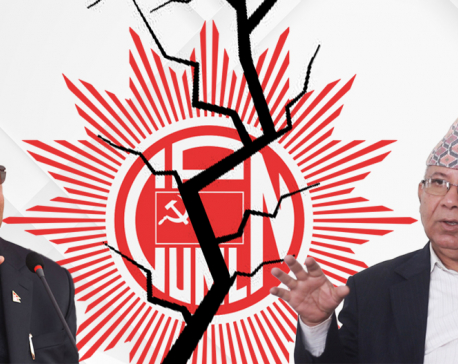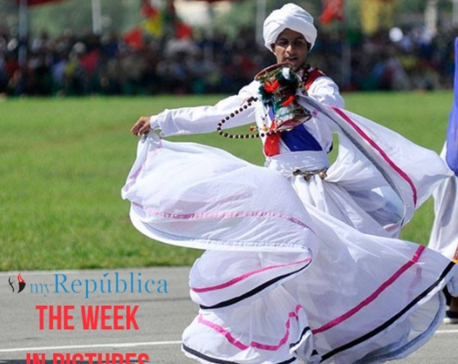
OR
Opinion

Nepal’s anarchic monarchy had an unceremonious end after the notorious palace massacre of 1 June 2001. The incident was a kind of implosion within an exclusive system. King Gyanendra was able to drag on the dead and defunct monarchy for the next five years simply because the 9/11 incident took place and subsequently the US declared a “war on terror”.
The bygone, abolished monarchy of Nepal used to rest on two planks – unitary state and Hinduism. Both these dimensions have one thing in common, that is, unity as against diversity, homogeneity as against heterogeneity. The unitary state demanded one language, one culture and even one attire. Similarly, a Hindu state confers the domination of Hinduism over other religions, at least, in the activities of the state. The idea of monarchy is against the idea of multi-ethnic, multicultural and multilingual and multi-religious country. Rather than inclusiveness, exclusiveness was the defining character of Nepal’s monarchy.
Abolishing the monarchy and switching to a republican state would have been near impossible in Nepal without adopting federalism and secularism. We may not have been successful in adopting these two concepts, or there could be laxity in implementation but they were necessary conditions for introducing and sustaining the republic. In a way these concepts were a response to the unitary state and Hinduism. The monarchy could not be dismantled without dismantling the unitary state and Hinduism. Therefore, these three concepts of politics, namely, republicanism, secularism and federalism need to be studied together as an answer to monarchy, unitary state and Hinduism.
Recently, the Chairman of Bibeksheel Sajha Party, Rabindra Mishra created a ripple, however small it may be, in the choppy waters of politics by publishing a discussion paper where he proposed an outright abolition of federalism and a referendum on secularism. This is an indirect way of advocating Hinduism. As for the monarchy, for reasons unknown or known only to him, he has not argued directly for abolishing republic but, in an around about manner, by pointing at growing unpopularity of republic and glorifying the role of King Prithivi Narayan Shah and King Mahendra, he has floated the idea that the monarchy may return if the present day crisis is not cured. As usual, he has also criticized these concepts to be imported or transplanted at the behest of foreigners. Forget about others, his own party men have been critical of his ideas. Some even called his proposal to be nothing more than Raprapaization of Bibeksheel Sajha Party.
Literally speaking, Nepal’s anarchic monarchy had an unceremonious end after the notorious palace massacre that took place on 1 June 2001. The incident was a kind of implosion within an exclusive system. King Gyanendra was able to drag on the dead and defunct monarchy for the next five years simply because the 9/11 incident took place and subsequently the US declared a “war on terror”. These incidents provided some breathing space for King Gyanendra as the Maoists rebels were declared to be terrorists. However, he squandered his opportunities and the joint movement launched by the then seven-party alliance and the Maoists in 2006 swept away the moribund monarchy.
Nepal’s monarchy was based on the Hindu religion. This can be inferred from the King being labelled as “an incarnation of Lord Vishnu”. Someone visiting the Narayanhiti Museum can easily infer the link just by taking a look at the throne being protected by overhead drawings of the astamatrika. In history, one could read King Prithivi Narayan Shah proclaiming to create Nepal an asali Hindustan because the other Hindustan was occupied by Britons. Declaration of Nepal as the only Hindu kingdom in the world was also a ploy to gain sympathy of the Hindus living in India. The present day politics is about seeking favour from BJP and RSS in India. Therefore, it is no wonder why the former King has been busy visiting hindu religious sites, temples and ceremonies offering pujas and prarthanas to Hindu gods and deities.
The drafters of the Constitution of Nepal 1990 have clarified elsewhere that the faux pas by the then Prime Minister KP Bhattarai, needlessly inserting a comma in between the phrases “Hindu” and“Constitutional Monarchical Kingdom” in Clause 4 of the Preliminary Section of the Constitution of Kingdom of Nepal 1990, turned the country to be a Hindu kingdom. The real intention of the drafters was to have a Hindu monarchy, not a Hindu kingdom.
In a brutal system, the source of power comes from the army and the bureaucracy. A mere observation, even to date, on the organization and perfunctory of Nepal Army and bureaucracy tells how Hinduism got sipped into state apparatus.
The monarchy also rested on command and control by a central authority. Federalism is an antithesis of command and control. Students are taught from their early school days that Nepal is a small country, even a poor and fragile country. This is to justify the central command and control system that goes with monarchy. But the fact is: it is a diverse country. Diversity can be observed in many ways – geo-topography, ethnicity, culture, language and religion. Therefore, dismantling the monarchy called for introducing a federal structure. The issue here is not whether we should or should not have a federal structure; it is about what type of federal structure. One reason why the first CA failed to draft the constitution is that we could not find a point of consensus between “identity based” and “capability based” federal systems. We may have mixed up the systems.
Secularism came under heavy attack during and at the time of drafting the constitution. As a result, it has to be defined in a diluted form in the constitution as “religious, cultural freedoms, including protection of religion and culture handed down from time immemorial.”
The pro-royalists and centralists whenever they have to attack FDR Nepal, they hit hard on secularism and federalism because they cannot fight on the plank of monarchy. The pro-monarchists are primarily drawn from hill originated, khas speaking bahun-chhetris having some family base in the army, the bureaucracy, the business sector and the former die-hard panchas. They constituted the elites of the Nepali society. By vehemently attacking secularism and federalism, they may draw some sympathizers from their community or even destabilize the newly-founded political system; but FDR Nepal is very much here to stay. Just like failings in democracy can be corrected by having more democracy, the same goes with federalism and secularism.
You May Like This

Is the ruling CPN-UML heading toward a formal split?
KATHMANDU, March 20: With the central committee meeting of the ruling CPN-UML on Saturday deciding to seek clarifications from four... Read More...

THE WEEK IN PICTURES
Cover photo: Constitution day celebration at Army Pavilion, Tudikhel on Wednesday. Photo: Keshab Thoker ... Read More...

Helping women re-envision a better Nepal: Women LEAD Nepal
KATHMANDU,March 7: Women LEAD Nepal started as an idea that women and girls could change the trajectory of Nepal’s future and... Read More...



Just In
- World Malaria Day: Foreign returnees more susceptible to the vector-borne disease
- MoEST seeks EC’s help in identifying teachers linked to political parties
- 70 community and national forests affected by fire in Parbat till Wednesday
- NEPSE loses 3.24 points, while daily turnover inclines to Rs 2.36 billion
- Pak Embassy awards scholarships to 180 Nepali students
- President Paudel approves mobilization of army personnel for by-elections security
- Bhajang and Ilam by-elections: 69 polling stations classified as ‘highly sensitive’
- Karnali CM Kandel secures vote of confidence
















Leave A Comment